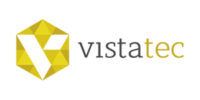SaMD Regulations and Global Healthcare Innovation
The healthcare industry is transforming, with digital health technology becoming more ubiquitous worldwide. In particular, software as a medical device (SaMD) is becoming increasingly prevalent in the healthcare industry. Its numerous benefits include the ease of data collection to develop patient-centric solutions. As its use continues to rise, regulatory authorities worldwide are concerned with ensuring these products meet the necessary safety and efficacy standards. The SaMD market is subsequently faced with various regulatory frameworks in different regions. Localization services can help SaMD manufacturers navigate local regulations to ensure products meet specific regional requirements.
In this article, we want to examine what SaMD is and explore some key differences between SaMD regulations in the EU and US. We’ll also investigate how using artificial intelligence and machine learning is set to shape the SaMD industry and the critical role SaMD regulations play in establishing trust and reliability in such continuous learning models.
Understanding SaMD
Software as a medical device, or SaMD, is defined by The International Medical Device Regulators Forum (IMDRF) and the Food and Drug Administration (FDA) as software designed to fulfill one or more medical purposes independent of integration in a medical hardware device. To scope a device, you must clarify its intended use and indications. The former refers to the device’s purpose, while the latter describes the diseases or conditions the device diagnoses, treats, prevents, cures, or mitigates. In short, this information specifies whom the device is intended for and the reasons for its use.
While today’s medical professionals rely on SaMD to perform a range of healthcare functions like diagnostics and treatment planning, it’s very different from software integral to hardware functionality, such as the software powering the rotation of an MRI’s magnets or the LED display of an X-ray control panel. Although SaMD can interface with such equipment, it goes beyond hardware performance, information retrieval, data management, or process analysis because it performs the medical function itself, whether embedded in a piece of hardware or not.
The Benefits of SaMD Solutions
Regulations for SaMD are necessary because SaMD healthcare solutions, like those used in the assessment of mammograms for breast cancer screenings, for example, offer direct and tangible benefits that are valuable for both health professionals and patients. One significant advantage is the ease and speed of data collection with SaMD, often surpassing traditional, more analog health improvement methods. Data quality is usually very high because these solutions are highly regulated and are crucial in developing patient-centric solutions that can significantly improve patient health.
SaMD is typically cloud-based, which gives it an edge in terms of flexibility and speed, not only when programming such healthcare solutions but also when updating or modulating them. It’s worth noting that connected medical devices are also much easier to maintain compared to traditional hardware-based health improvement solutions.
How SaMD Regulations Are Impacting the Life Sciences Industry
To understand the significance of SaMD regulations (and their impact on healthcare), looking more closely at what they currently entail and how they play out internationally is helpful.
The Full Scope of SaMD Regulations
Many SaMD solutions are available today, with many more expected to launch soon. Most of these are designed to aid in diagnosing, preventing, evaluating, treating, predicting, alleviating, or monitoring illnesses, injuries, or disabilities. Additionally, if a medical device running as standalone software is involved in fertilization or sterilization processes, it is also considered a SaMD.
SaMD ranges from software that can detect cancer based on smartphone images to sleeping disorder applications that analyze data to develop a sleep treatment plan. In the life sciences industry, numerous SaMDs are commonly used today, including:
- Software for viewing MRI, ultrasound, or X-ray images on a mobile device for diagnostic purposes.
- Software that uses the tri-axial accelerometer on a smartphone to diagnose a medical condition.
- Software for collecting patient data in real-time, monitored by a medical professional, to develop treatment plans.
- Software to create 3D images of patients based on their medical images to assist surgeons in better visualization.
- Software that scans and creates a 3D image of the brain can be tracked over time as additional MRI scans are performed.
- Software for treating dementia through cognitive stimulation.
- Software employing artificial intelligence (AI) to improve the accuracy and efficiency of long-term EEG readings in epilepsy.
SaMD Regulations in the US
The FDA acknowledges that its medical device regulations were developed primarily for traditional medical devices, so it released guidelines specific to software, including pre-market requirements. The current guidelines were published in 2005 and categorize SaMD according to three “levels of concern” based on the potential severity of injury that could result from device failure or design flaws:
- Minor when failures or latent design flaws are unlikely to cause any injury to the patient or operator.
- Moderate when failures or latent design flaws could directly result in minor injury of the patient or operator, including through delayed or incorrect information or a provider’s actions.
- Significant when failures or latent design flaws could directly result in death or severe injury to the patient or provider, including through delayed or incorrect information or the actions of a provider.
The guidelines specify that the documentation required for submission must be based on the level of concern applicable to the respective device. In addition, a new draft of guidelines was published in 2021, which includes two levels of documentation: basic and enhanced. These are eventually set to replace the three levels of concern in the existing guidelines at some point.
For compliance, it’s essential to indicate the level of concern and whether a device requires basic or enhanced documentation. The current guidelines and the new draft have similar documentation requirements, as they only categorize SaMD differently.
SaMD Regulations in the EU
SaMD regulations in the EU are similar to those in the US and do not differ from traditional medical device regulations. All relevant requirements in the EU Medical Device Regulation and the EU In Vitro Diagnostic Medical Devices Regulation must be adhered to comply with EU regulations. It’s noteworthy that EU regulations refer to “medical device software” (MDSW) instead of SaMD.
The European Commission has issued several actionable guidelines for SaMD manufacturers:
- MDCG 2021-24 guides the classification of medical devices.
- MDCG 2020-1 on medical device software’s clinical and performance evaluation.
- MDCG 2019-16 on cyber security for medical devices.
- MDCG 2019-11 on the qualification and classification of software.
SaMD Regulations and the Evolution of Life Sciences
For years, the software has been changing how medicine is practiced, how healthcare is managed, not to mention how patients and clinicians interact. One of the most notable advancements in this evolution is using SaMD to perform complex medical functions. This development has become a full-blown revolution with the latest progress in AI in general and machine learning (ML) in particular.
How AI Is Changing SaMD Regulations
As noted in Deloitte’s report, “Reimagining digital health regulation: An agile model for regulating software in health care,” some SaMD powered by AI-enabled algorithms can, in some cases, outperform the accuracy of diagnoses made by trained clinicians. In the UK, for instance, the National Health Service (NHS) has partnered with Google’s DeepMind to help doctors detect early signs of eye diseases that can impair vision. Google’s British-based AI division used ML to analyze over one million anonymous eye scans and generate computer algorithms capable of identifying early warning signs clinicians might oversee. The goal was to facilitate early-stage detection and treatment of common eye diseases, such as age-related macular degeneration and diabetic retinopathy, the latter being the fastest-growing cause of blindness globally.
This is just one example that illustrates how SaMD regulations need to account for the use of devices powered by ML now and in the future if they want to cover all developments in this area and enable clinicians worldwide—and ultimately their patients—to benefit from them.
SaMD Regulations in the Machine Learning Era
The age of AI has arrived. Unlike simple rules-based systems that were the standard of the past, ML-based systems powering SaMD are cognitive and can modify their output accordingly. In other words, they utilize large datasets and complex statistical methodologies to map new relationships between input, actions, and outcomes. Data-driven or ML systems are not programmed to provide pre-determined outputs; they’re designed with the ability to learn and make judgments on their own.
SaMD regulations must establish an adequate level of trust and reliability to ensure that medical device regulators, clinicians, and patients continue to benefit from progress made by ML. If not, its acceptance could be adversely affected. At the same time, if machine learning is not leveraged, clinicians and patients cannot benefit from increased efficiency and efficacy in healthcare. A clear definition of trust and reliability is critical to the success of these continuous learning models. As they are based on the assumption that performance will change as more training data become available and the intelligence refines itself, the need for trust and reliability will be even more significant, and SaMD regulations are mission critical.
Looking to the Future
As the use of SaMD continues to expand, navigating the complex, ever-evolving regulatory landscape will become increasingly challenging for software manufacturers.
Compliance with SaMD regulations is essential to warranting patient safety and establishing trust in these innovative healthcare solutions. Yet, it can be daunting, particularly for those aiming to roll out their products to multiple markets. Localization can instill trust in these products to help ensure their acceptance and adoption by regulators, physicians, and patients worldwide.
Localization is crucial in developing SaMDs tailored to different global markets’ specific needs and preferences. By localizing medical software to meet the demands of regional markets, software developers can better demonstrate their commitment to providing high-quality, accessible, and effective healthcare solutions for patients and healthcare professionals worldwide.
Here at Vistatec, our dedicated Life Sciences Division collaborates closely with some of the most renowned organizations in the world to provide accurate, high-quality localization, translation, and publishing solutions for medical services and products. Our service suite enables you to impact the SaMD market and scale your healthcare solutions.

